7 Ways To Play Lead Sheets With Your Left Hand
Lead sheets are a great way for pianists to explore new music. If you’re not familiar with lead sheets, you can read all about them here: “How To Read A Chord Chart Or Lead Sheet At The Piano” In short, lead sheets are bare-bones sheet music that provide you with a notated melody line and […]
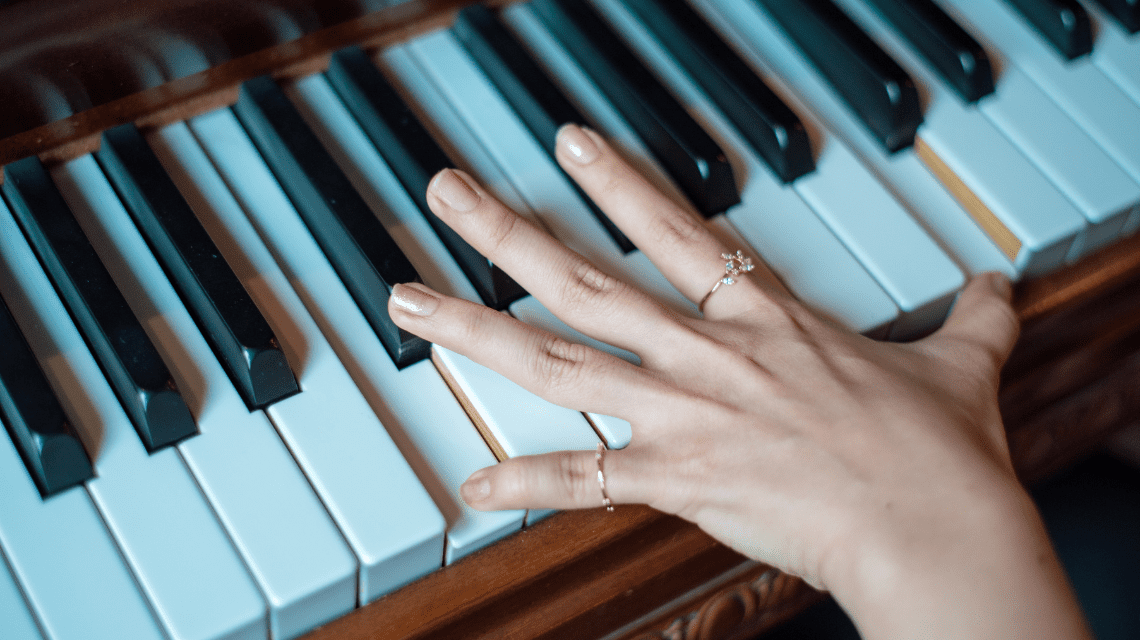
Lead sheets are a great way for pianists to explore new music. If you’re not familiar with lead sheets, you can read all about them here: “How To Read A Chord Chart Or Lead Sheet At The Piano”
In short, lead sheets are bare-bones sheet music that provide you with a notated melody line and a chord progression. Here’s an example:
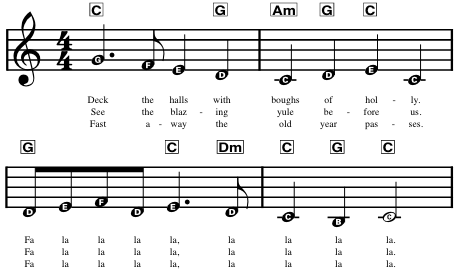
Beginner Notes arrangements on Musicnotes.com are always written in this easy-to-read lead sheet format. You can also find the official lead sheet arrangements here.
In this lead sheet of “Deck the Halls,” your right hand would play the melody that is notated in the treble clef while your left hand would play the chords, which are indicated by the letters in the boxes above the staff.
Some people find it really confusing for the left hand to read above the treble clef, since the left hand is usually notated below the right hand in the bass clef. It takes some getting used to reading a lead sheet, but just like anything else, it gets easier with practice.
Lead sheets are great for pianists because they:
- Help you lock in music theory concepts by identifying and using chords
- Allow you to be creative at the piano, giving you the freedom to create music that sounds the most appealing to you
- Help you play with ease, since you are not tied to specific written notation in each hand
Some pianists freeze up when they’re presented with a lead sheet because they don’t know what to do with the left hand. Here are 7 things your left hand could do when you’re playing from a lead sheet.
1. Single Bass Note
The simplest option would be to play the chord symbol as a single bass note in the left hand. Your bass note would correspond with the root of the chord. In the “Deck the Halls” example, you’d hold on to a C in the bass for 3 beats, then play a G on beat 4. Just continue on reading the chord symbols as left hand bass notes. Hold each bass note until a new note appears.
Here’s an example of what that would look like notated:
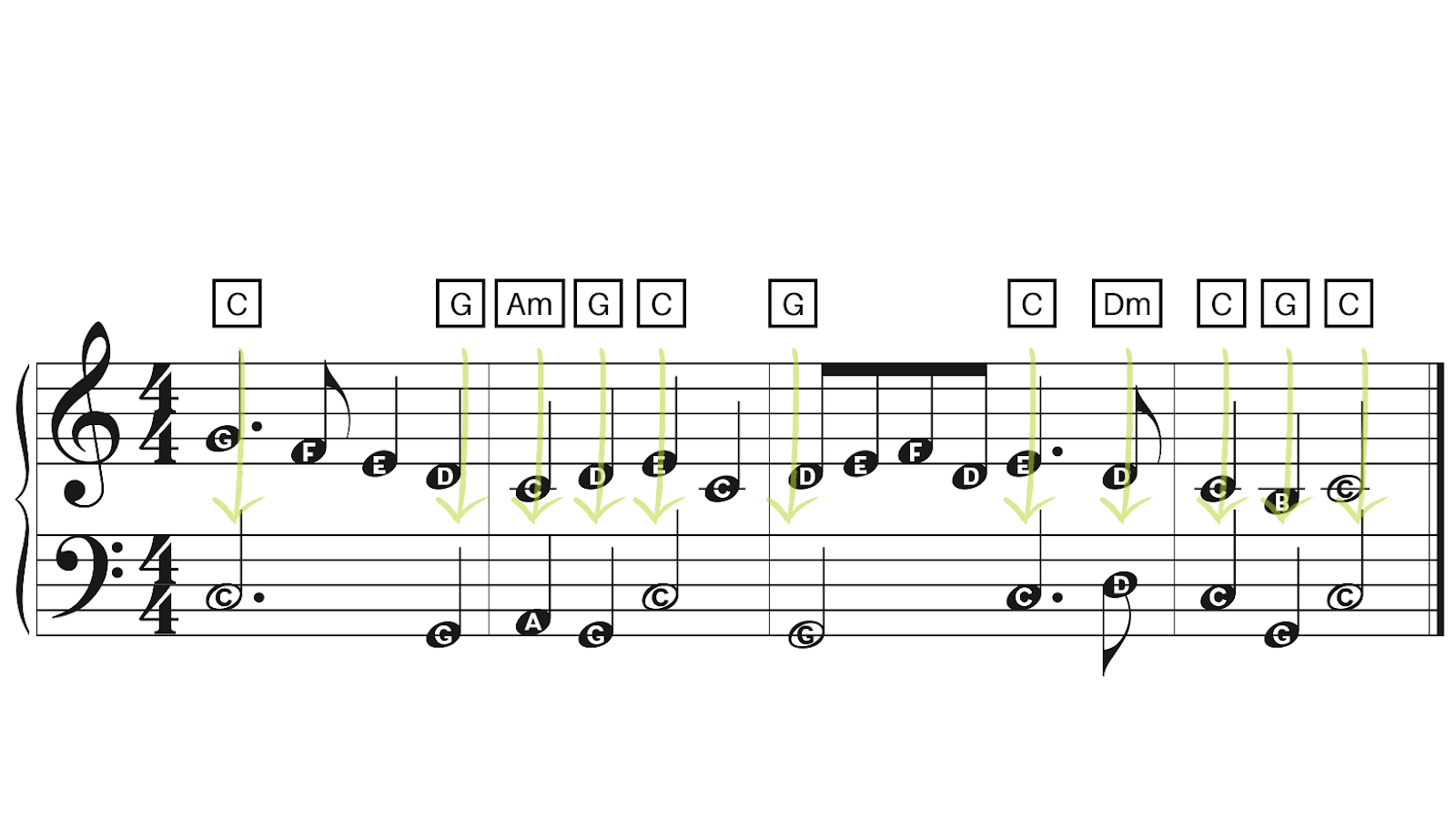
It’s nothing fancy, but it does a good job of filling in the bass harmony to support your melody line. This is a good starting place if you’re intimidated by reading a lead sheet.
2. Octaves
An easy way to make the lead sheet harmony sound a little more interesting is to turn those same bass notes into octaves. Your left hand will have to practice moving from one octave to the next, but it’s a small thing that will make a big difference in the sound of your music. Here’s what the same “Deck the Halls” example would look like notated with the left hand playing octaves:

If you’re feeling a little more ambitious, you could break those left hand octaves apart and play them as alternating eighth notes between the lower and higher pitches. This is a good way to add a little more energy to your music if you’re looking for a more driving beat. Here’s what that would look like:
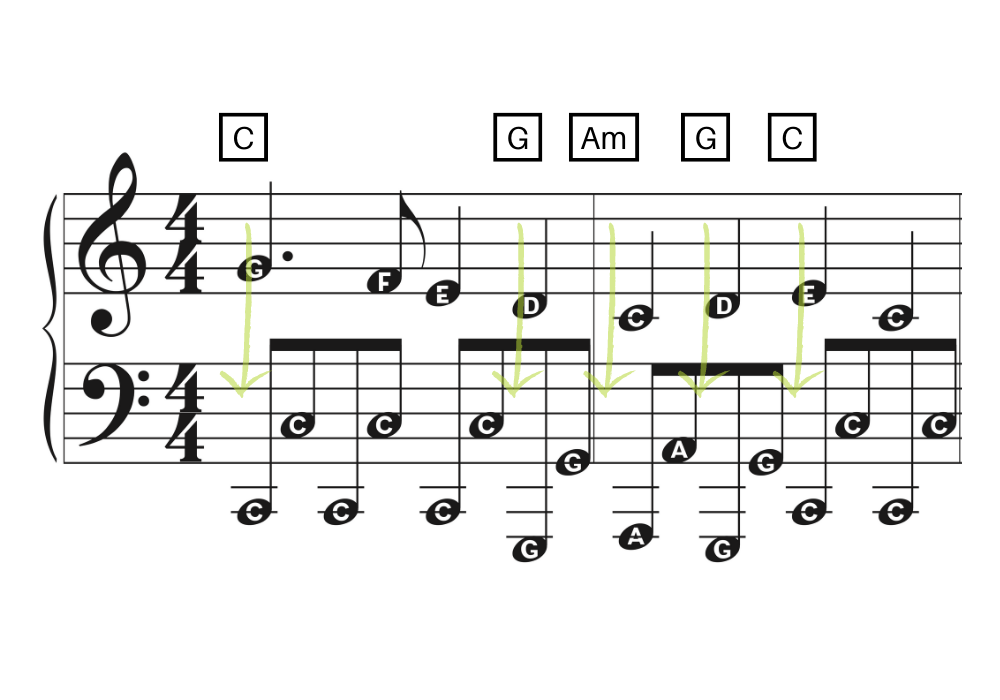
3. Blocked Triads
While a single bass note or octave bass notes in the left hand works with lead sheets, playing the complete chord that is intended is often a better option. It will complete the harmony better and give a little more to work with.
If you’re not sure how to form chords from a chord symbol, this article is helpful: “How To Play Piano Chords for Beginners”
Let’s use “Jingle Bells” as an example. Here’s a lead sheet for the opening part of “Jingle Bells”:
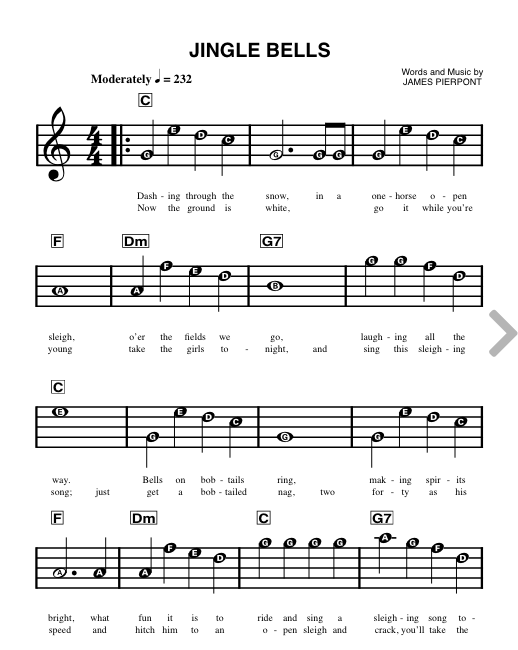
In this song, your left hand would play a full triad or 7th chord at the beginning of each measure. If a measure isn’t labeled with a chord symbol, you would just repeat that chord from the previous measure. In this example, we’re using blocked chords, which means all of the notes of the chord are played together at the same time.
A lot of pianists quickly figure out how to play chords in their root position. However, moving from one root position chord to the next can feel and sound really clunky on the piano. It’s better to use chord inversions to make smooth, efficient transitions from chord to chord.
Here’s an example of what to play:
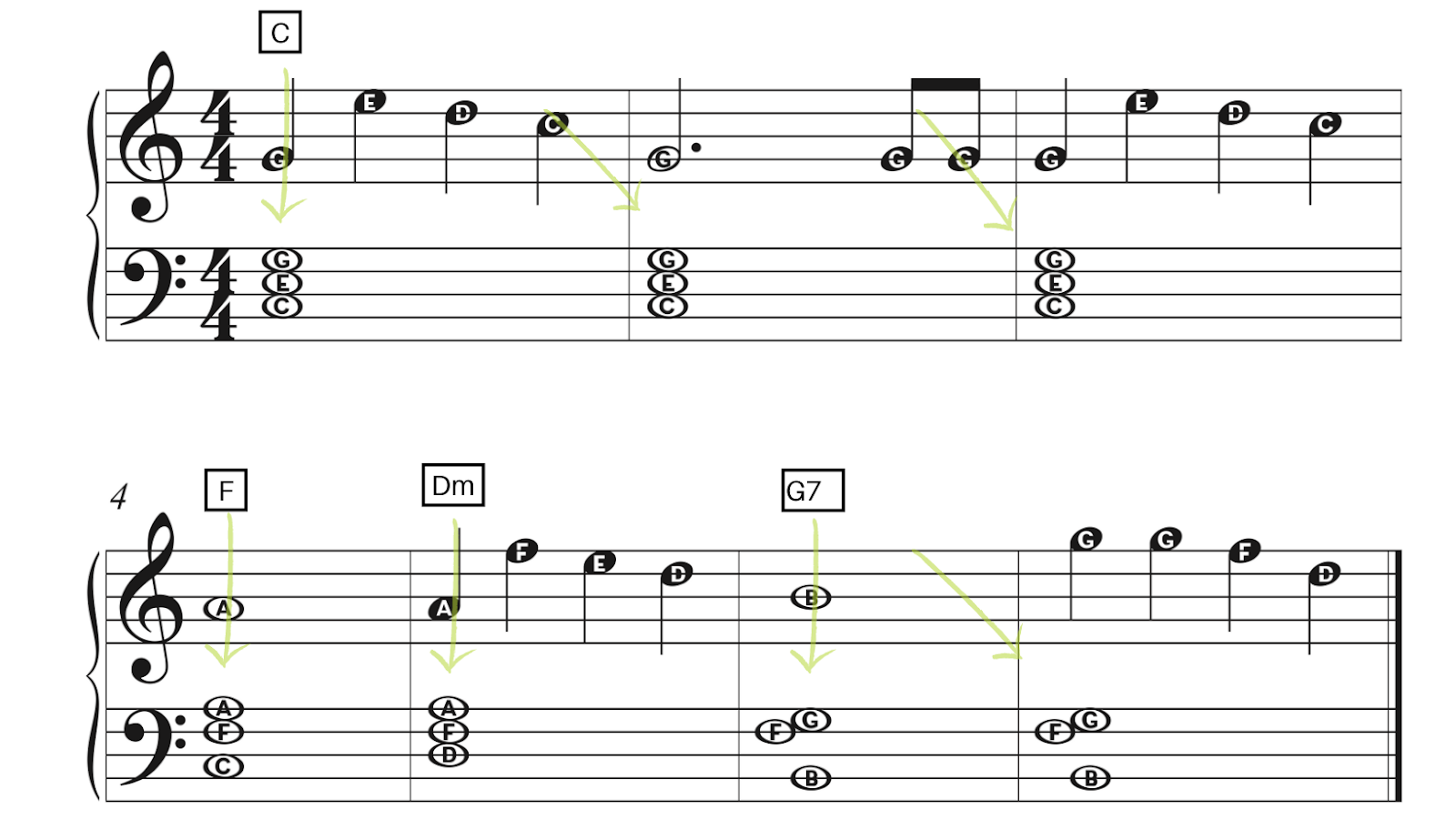
Blocked triads are really useful on the piano, and once you get comfortable playing them and their inversions, there is a lot you can do with them.
4. Chord Shells
Some people find playing a full chord in the left hand to be challenging. It takes a lot of practice and coordination to get all of the notes of the chord to sound clean and precise. It’s common that a note or two sounds muted or muffled because it isn’t played as strongly as the other notes. Sometimes notes of a chord get left out completely. Or, even if all the notes are played, there might be a slight delay in a note or two, resulting in a really choppy sound.
An alternative to playing the full chord is to play the chord shell, which is just the outer two notes of the chord. You would leave out any middle notes and only play the highest and lowest notes in the chord. This is a really great option for beginners because it fills out the sound of the harmony, but it’s much easier to get a consistent sound.
Here is what the same “Jingle Bells” example from above looks like with chord shells:
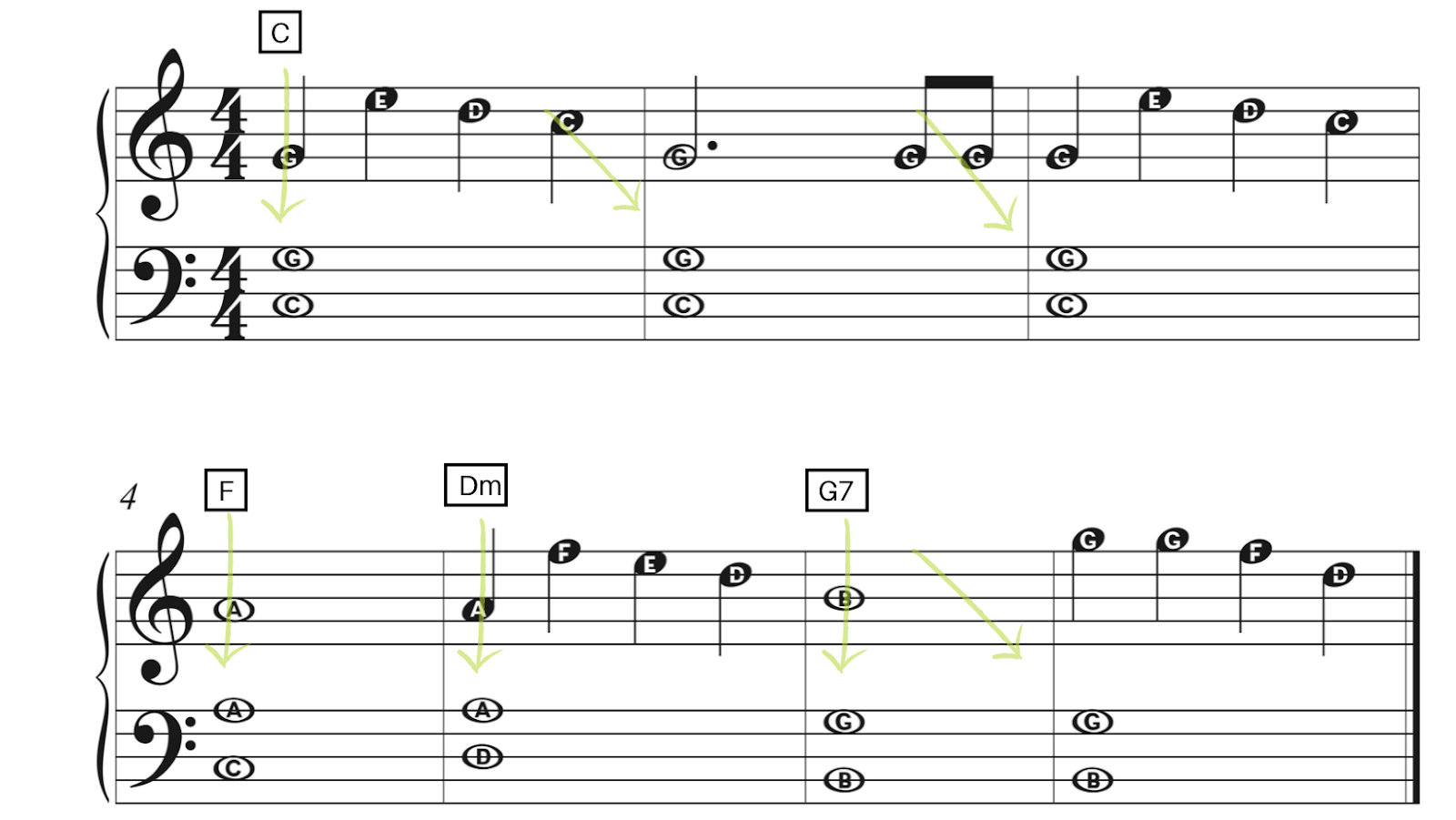
5. Broken Triad
Once you’re comfortable playing blocked chords with a lead sheet, you can start varying how you play the chords. A simple variation of a blocked triad is to play a broken triad. This just means that you’re breaking the chord apart and playing each note individually.
Broken triads are a great option if you’re trying to create a really smooth, flowing sound. “Silent Night” is a good example of a song that works well with broken triads.
Here is the lead sheet for “Silent Night”:
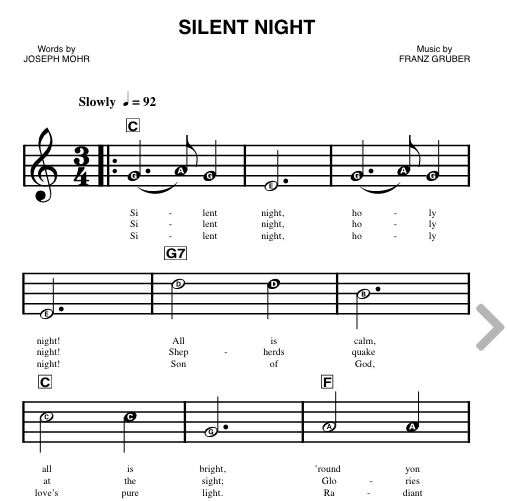
Instead of blocking the chord at the beginning of each measure, you would break it apart. Since “Silent Night” is in three-four time and there are 3 notes in each triad, it works well to build the chord from the bottom to the top, playing one note per beat in each measure.
Here’s what it looks like to play broken triads with “Silent Night”:
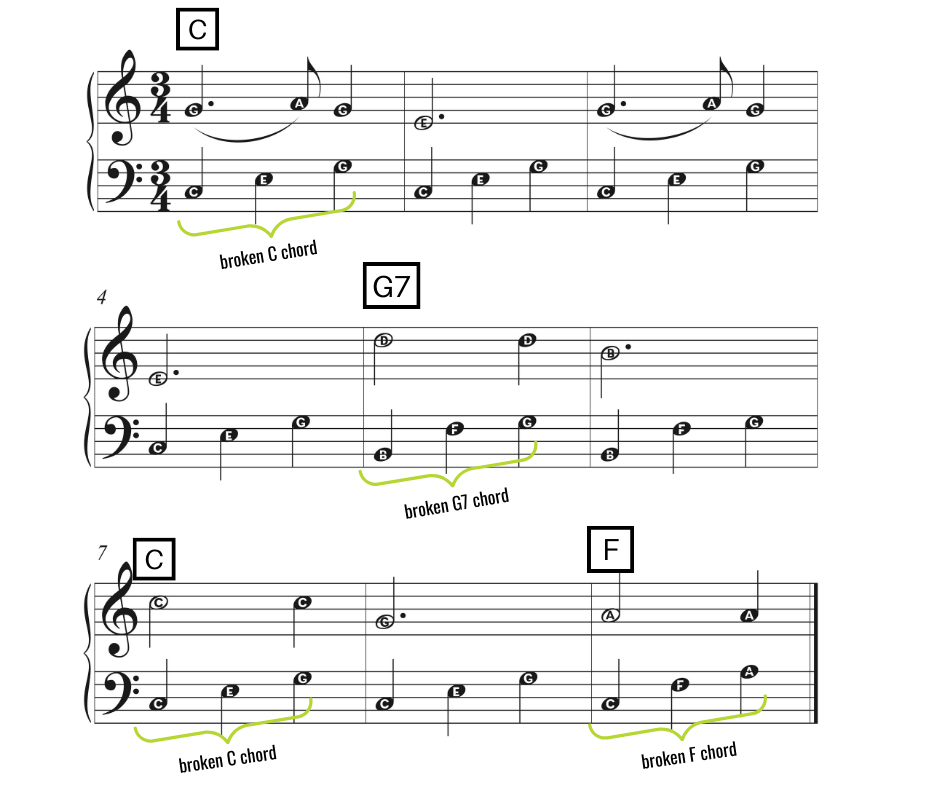
If you’re playing in four-four time, you would either hold out the top note of the chord for one extra beat, or you could return to the middle note of the chord.
6. Waltz Pattern
Another variation of playing a blocked chord is to play a waltz pattern. This is a combination of blocked and broken chords. You play the lowest note of the chord alone, then the upper two notes together twice. The pattern is bottom-top-top for each chord.
Since waltzes are in three-four time, this pattern is best suited to be played in three, but you can easily adapt it to add an extra beat if your music is in four. In this case, you could hold out the 3rd set of notes for an extra beat, or add an extra set of top notes to make it bottom-top-top-top.
Here’s what “Silent Night” looks like with a waltz pattern in the left hand:
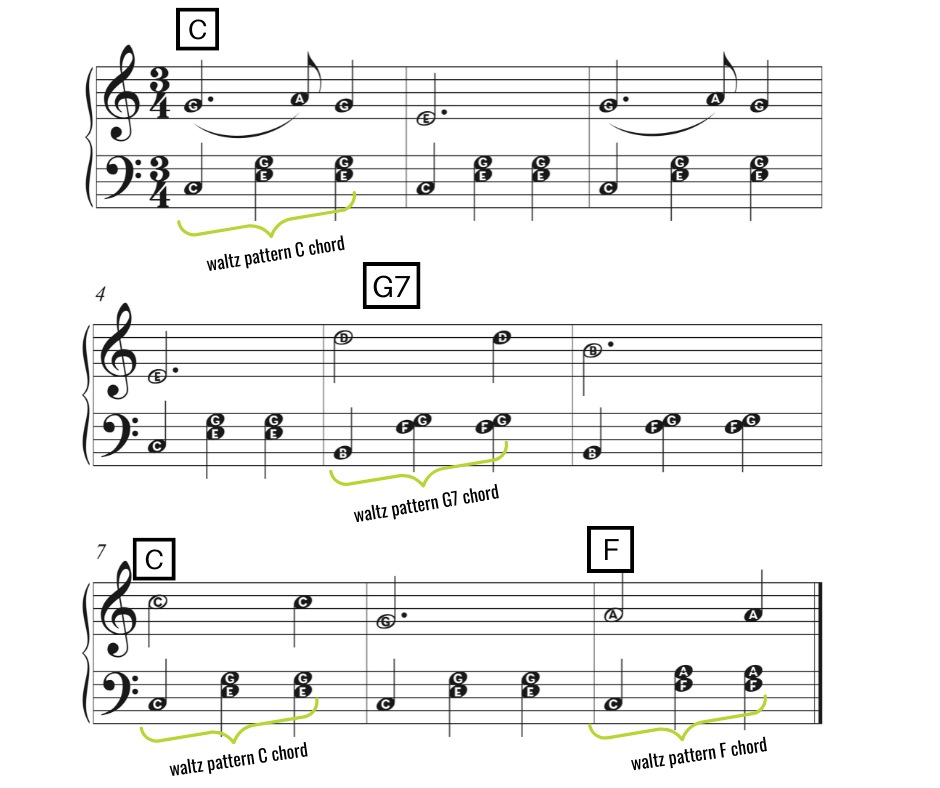
7. Alberti Bass
Alberti Bass is a very common left hand pattern on the piano and it’s heard in a lot of classical and traditional music.
Alberti bass is a broken chord that follows this pattern bottom-top-middle-top. Since it’s a four-note pattern, it works best in four-four time, either as eighth notes or quarter notes.
“Angels We Have Heard on High” is a good song to play with Alberti Bass. Here is what the lead sheet looks like:
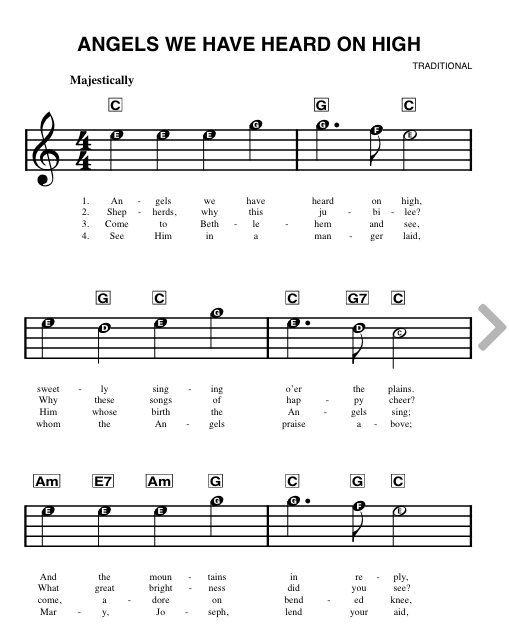
And here’s how you would play the first line with Alberti Bass:
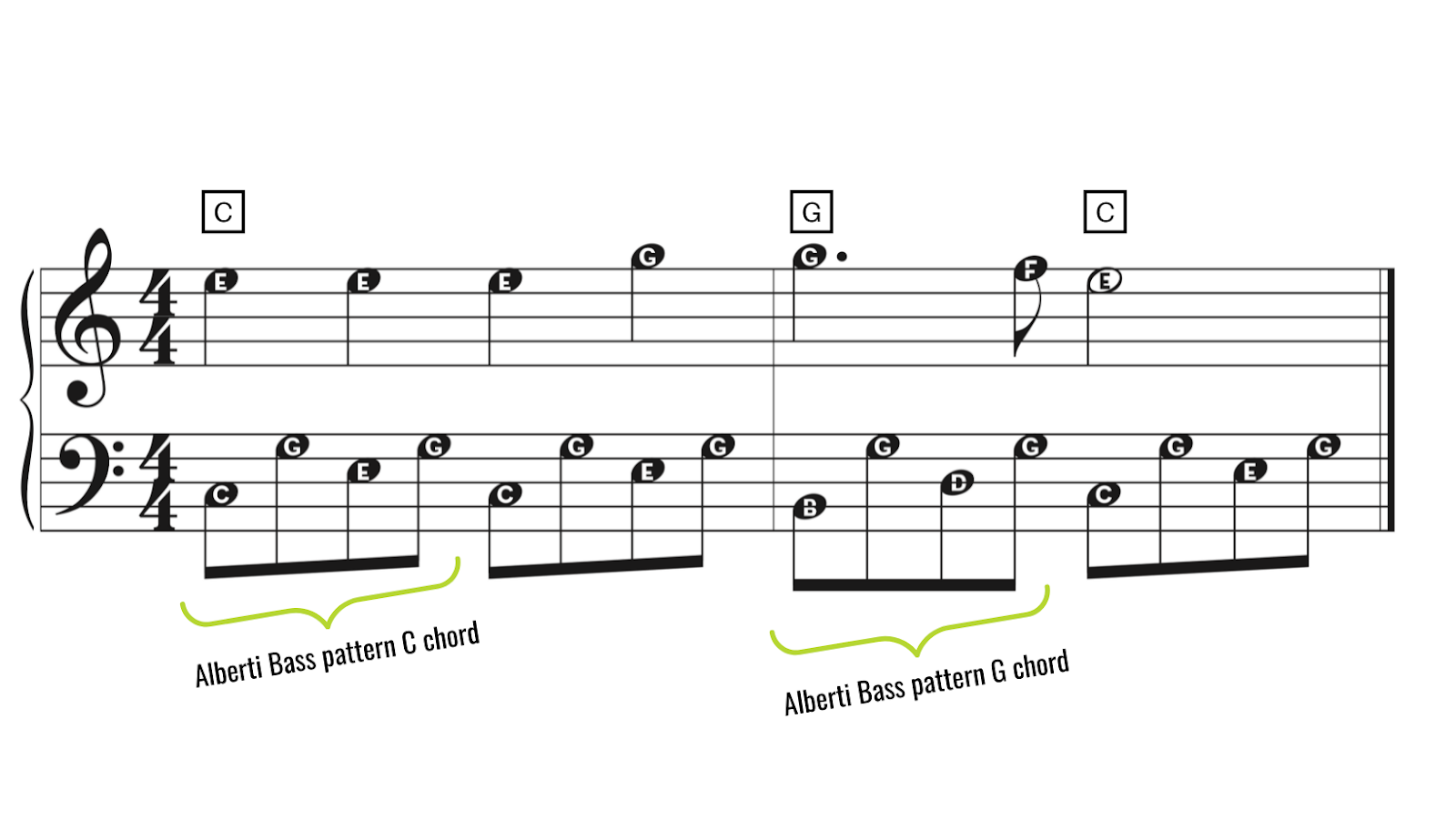
If reading from lead sheets seems overwhelming, just take it one step at a time. The best starting point is to practice playing the chord symbols as a single note with your left hand. This will get you acclimated to reading the lead sheet format and help your left hand get used to providing the harmonic support for the melody at the right times.
From there, you can move on to playing octaves. Later, study up on how to form chords. Memorize a few chords that you notice show up over and over again in your music and practice moving between them.
When you’re ready to get creative, start experimenting with different patterns using those chords.
It’s important to note that you don’t have to stick with only one pattern for an entire song. It’s very common that the left hand plays a combination of single notes, octaves, blocked chords and broken chords.
The style of the music will give you some clues about which left hand option to choose. Also, think about ways the left hand can complement the right hand. If the right hand has a busy melody line, you’ll probably want to keep the left hand simpler by playing blocked chords or octaves. If the right hand is holding longer notes, that is a good time for the left hand to fill out the sounds with a broken chord pattern.
Lead sheets are meant to be used in an improvisational way, so you have a lot of freedom to create music that sounds pleasing to you. Have fun using lead sheets to make music!
This post was written by Megan, piano teacher and author of Pianissimo: A Very Piano Blog. Visit her website for more piano related blogs for teachers, parents, students, and all things piano.
More Blog Posts Related to the Piano
- How to Choose, Tune, & Play Your First Piano: Beginner Tips
- Piano Pairs: Beginner Notes and Easy Piano Arrangements
- 25 Easy Kids Songs For Piano
- 6 Ways Piano Teachers Can Give Assignments To Students
- 11 Piano Practice Tips
- Nature or Nurture: Do You Need To Be Born With Natural Talent To Play The Piano Well?
- 11 Classical Piano Pieces You Might Want To Learn and Easier Arrangements

